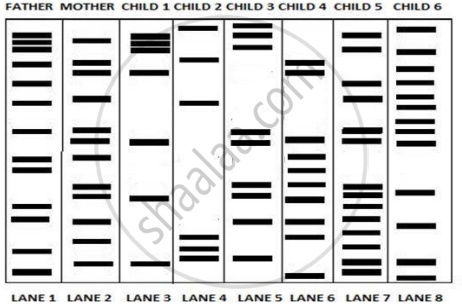Advertisements
Advertisements
प्रश्न
Describe the structure of chromosomes with a suitable diagram.
उत्तर
Chromosomes are filamentous bodies present in the nucleus and are visible during cell division. A metaphasic chromosome has 2 identical halves called sister chromatids. Each chromatid is in turn made up of sub chromatids called chromonemata (singular – chromonema). The chromatids lie side by side and are held together at one point called the centromere. The centromere is also called the primary constriction. During cell division, the spindle fibres are attached at the centromere. Besides the primary constriction, additional narrow areas called secondary constrictions are present. Some of the secondary constrictions are called nucleolar organizers because they are necessary for the formation of the nucleolus. The part of the chromosome beyond the nucleolar organizer is short, spherical and is called satellite. The tip of the chromosome is called telomere. It has a unique property in that it prevents the ends of the chromosomes from sticking together but attaches to the nuclear envelope. The surface of a chromosome bears the number of small swellings called chromomeres.

APPEARS IN
संबंधित प्रश्न
If the number of chromosomes in an endosperm cell is 27, what will be the chromosome number in the definitive nucleus?
- 9
- 18
- 27
- 36
Define the term ‘genome’.
Sketch and label the structure of chromosome.
Changing the codon AGC to AGA represents
Match the column I (Type of chromosome) with column II (name of chromosome).
| Type of chromosome | Name of chromosome | ||
| i. |  |
P. | Acrocentric |
| ii. |  |
Q. | Telocentric |
| iii. |  |
R. | Metacentric |
| iv. |  |
S. | Sub-metacentric |
From the following identify the statements that are CORRECT with respect to homologous and non-homologous region of X and Y chromosomes.
i. Non-homologous region of X chromosome is longer and contains more genes than that of non-homologous region of Y chromosome.
ii. X-linked genes are present on nonhomologous region of X-chromosome.
iii. Y-linked genes are present on homologous region of Y-chromosome.
iv. Crossing over occurs only between homologous regions of X and Y chromosomes.
What are minisatellites?
There was a mix-up at the hospital after a fire accident in the nursery division. Which of these children belong to the parents?

How do genes and chromosomes share similarity from the point of view of genetical studies?
Consider the following information and answer the question that follows:
|
Make a single pedigree chart using the above information to show the pattern of inheritance of phenylketonuria (PKU) in the family of Reshma.
